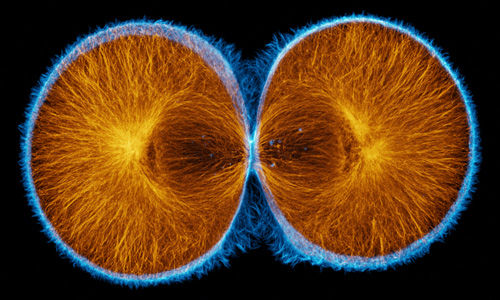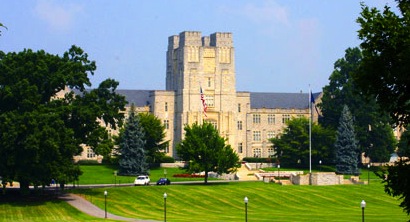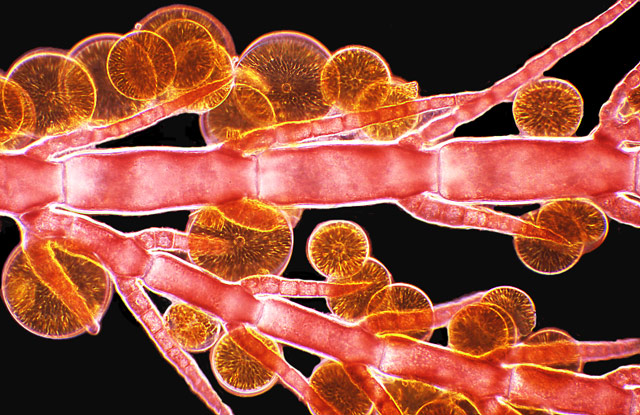Team:Virginia Tech/Project
From 2011.igem.org
| (2 intermediate revisions not shown) | |||
| Line 33: | Line 33: | ||
===Design=== | ===Design=== | ||
| + | <i> Design Team Members: Mark, Daniel</i> | ||
<p>The Design Team designs biological constructs and makes predictions about their performance using the software tool GenoCAD. As a Computer Assisted Design (CAD) tool, GenoCAD has a repository of biological parts, grammatical rules that help users put them together, and an attribute-grammar-based structure that helps users make predictions about how their assemblies will perform before they are made in a lab. The Design Team works with all of these aspects of GenoCAD - searching for promising fluorescent reporters, promoters, and degradation tags to add to the repository, writing grammatical rules specific to this project that govern how parts can be put together, and using attributes to model how they expect our constructs to behave. This software has been very useful to our project and has made it easy for the Design Team to quickly design many constructs and pass information about them to the Fabrication Team. </p> | <p>The Design Team designs biological constructs and makes predictions about their performance using the software tool GenoCAD. As a Computer Assisted Design (CAD) tool, GenoCAD has a repository of biological parts, grammatical rules that help users put them together, and an attribute-grammar-based structure that helps users make predictions about how their assemblies will perform before they are made in a lab. The Design Team works with all of these aspects of GenoCAD - searching for promising fluorescent reporters, promoters, and degradation tags to add to the repository, writing grammatical rules specific to this project that govern how parts can be put together, and using attributes to model how they expect our constructs to behave. This software has been very useful to our project and has made it easy for the Design Team to quickly design many constructs and pass information about them to the Fabrication Team. </p> | ||
| - | + | ||
===Fabrication=== | ===Fabrication=== | ||
| + | <i> Fabrication Team Members: Mandy, Loran, Hayley, Swetha</i> | ||
<p>The fabrication team experimentally creates the constructs designed <i>in silico</i>. Through traditional cloning or BioBrick assembly, they assemble the various parts comprised in a specific design. The created recombinant molecules are transformed into specific hosts: ''Escherichia coli'' or ''Saccharomyces cerevisiae''. The constructs generated are screened and sequenced to confirm their successful assembly. The positive clones are passed to the characterization team.</p> | <p>The fabrication team experimentally creates the constructs designed <i>in silico</i>. Through traditional cloning or BioBrick assembly, they assemble the various parts comprised in a specific design. The created recombinant molecules are transformed into specific hosts: ''Escherichia coli'' or ''Saccharomyces cerevisiae''. The constructs generated are screened and sequenced to confirm their successful assembly. The positive clones are passed to the characterization team.</p> | ||
===Characterization=== | ===Characterization=== | ||
| + | <i> Fabrication Team Members: Judith, Brittany, Meghan, Adam</i> | ||
<p>The Characterization Team collects and analyzes data on our constructs after they have been designed and fabricated. They specifically want to determine how quickly the different fluorescent protein constructs mature and degrade. To collect data, they are using an automated microscope platform that includes a microfluidic system for trapping cells, and switching the available nutrients to them. All of the hardware is adaptively controlled by the software GenoSIGHT. This arrangement allows them to precisely control when cells are exposed to a stimulus, and automates the collection of fluorescence data. After data is collected it is compared to a mathematical model of expected maturation and degradation processes. Parameter estimation is then used to give us quantitative descriptions of our constructs. This information is used to compare different constructs, and it is passed back to the Design Team. The Design Team then compares these results to their expectations, adjusts their models accordingly, and generates new designs as necessary, beginning the cycle all over again. </p> | <p>The Characterization Team collects and analyzes data on our constructs after they have been designed and fabricated. They specifically want to determine how quickly the different fluorescent protein constructs mature and degrade. To collect data, they are using an automated microscope platform that includes a microfluidic system for trapping cells, and switching the available nutrients to them. All of the hardware is adaptively controlled by the software GenoSIGHT. This arrangement allows them to precisely control when cells are exposed to a stimulus, and automates the collection of fluorescence data. After data is collected it is compared to a mathematical model of expected maturation and degradation processes. Parameter estimation is then used to give us quantitative descriptions of our constructs. This information is used to compare different constructs, and it is passed back to the Design Team. The Design Team then compares these results to their expectations, adjusts their models accordingly, and generates new designs as necessary, beginning the cycle all over again. </p> | ||
Latest revision as of 03:36, 29 September 2011
| Home | Team | Official Team Profile | Project | Parts Submitted to the Registry | Notebook | Safety | Attributions |
|---|
 "
"


